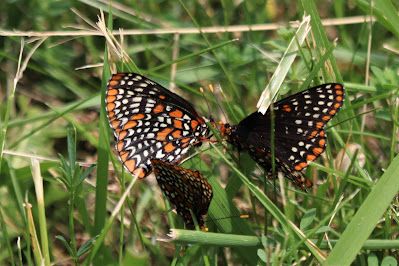Moths and a Dragonfly:
On June 28th, we hiked trails alongside the Ausable River where we found some cool moths and a very large dragonfly!
There are wild variations within the species of the Leconte's Haploa Moth. Both individuals above are the same species! All Leconte's Haploa Moths have an orange head with black eyes. There is an upside down 'Y' on the back. Legs are dark on one side and light on the other, like arms that get an uneven tan in the summer. https://www.insectidentification.org/insect-description.php?identification=Lecontes-Haploa-Moth
Adult Beggar Moths are active from late spring through early autumn. The yellow wings appear translucent, letting light through. They are attracted to lights at night. https://www.insectidentification.org/insect-description.php?identification=The-Beggar-Moth
Despite its name, the caterpillar of the Crocus Geometer Moth feeds on a diverse group of trees and shrubs including cherry, elm, maple, and basswood. It also enjoys rose, viburnum, blueberry and currant shrubs. https://www.insectidentification.org/insect-description.php?identification=Crocus-Geometer-Moth
Lucky for us, a Swift River Cruiser stopped for a break right beside me, giving us a chance to identify it. They can most often be seen "cruising" very fast along the shore for long stretches before turning back. This is a large dragonfly reaching lengths up to 76 mm. Field Guide to Dragonflies and Damselflies of Algonquin Provincial Park and Surrounding Area, Colin D. Jones et al.






























.JPG)


















